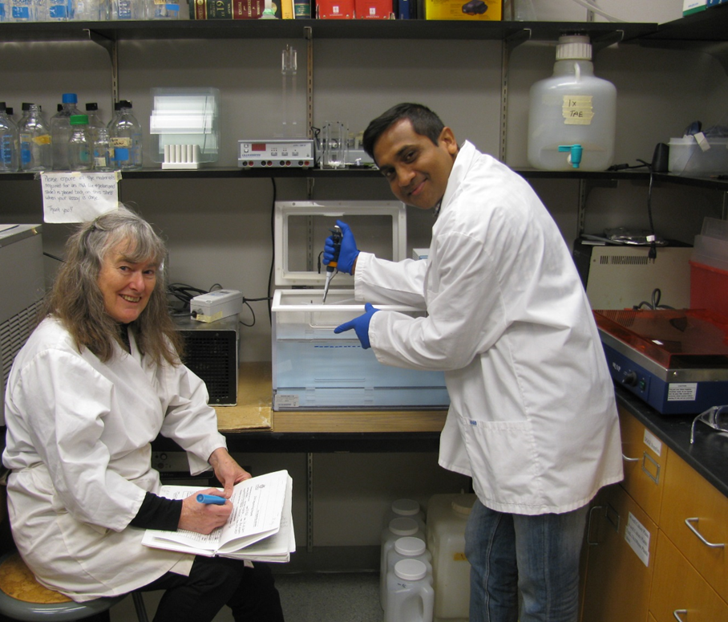Fishing for the future
July 22, 2015
Share
A lack of affordable, nutritious food and uncertain employment opportunities in Nunavut have led to the creation of a new project headed by Queen’s University researchers Virginia Walker, Peter Van Coeverden de Groot, Stephen Lougheed, Carleton University researcher Stephen Schott and James Qitsualik and William Aglukkaq from Gjoa Haven Nunavut.
Towards a Sustainable Fishery for Nunavummuit has received $5.6 million cash and in-kind from Genome Canada and multiple other organizations. The goal is to develop a science-based fishing plan for arguably the last unexploited fishery in the Northern Hemisphere, creating opportunities for employment and economic benefits for Nunavut along with greater food security.

“Things are changing rapidly in the Arctic and this is our opportunity to help,” says Dr. Walker (Biology). “Seventy per cent of people living in Nunavut communities are living with food insecurity. This project, done well, will go a long way towards mitigating that situation. The Nunavummiut should benefit from the resources on their own land.”
The team will work together with their longstanding colleagues from Gjoa Haven and other Nunavut communities to integrate traditional ecological knowledge (TEK) with leading-edge genomic science to gain an understanding of the fish and shrimp populations. This work will provide critical baseline data to allow monitoring of impacts of future climate change and other disturbances (for example increased shipping) and help create strategies to maintain genetically diverse and healthy stocks.
Dr. Van Coeverden de Groot will work in the field alongside Mr. Quitsualik and other colleagues using TEK and modern day science to evaluate fish and shrimp populations for sustainable Inuit harvest.
“The challenges of fieldwork are daunting but working with James, George, William and others - with whom we have been working for more than 10 years using their TEK and experience in the cold and on the sea ice - means that our chances of success are great,” says Dr. Van Coeverden De Groot (Biology).
Dr. Lougheed’s team will do genomics work to help designate distinct fish stocks. Dr. Walker’s group will work to assess that the fish are healthy, which will generate confidence in the stocks and lead to higher commercial prices.
“The Department of Fisheries requires solid data to provide commercial fishing licences,” says Dr. Lougheed (Biology). “We also need to know how healthy the fish are and how many there are. By working alongside our northern colleagues, we can learn from them, and hopefully they can learn something from us.”
The goals for this project are many and include understanding the dynamics of fish and shrimp populations, creating a fishing plan that won’t deplete the stock, working on obtaining a commercial fishing licence for the, and providing training to monitor and maintain the health of the fish population.
“A lot of fisheries around the world have been exploited and we don’t want that to happen here,” says Dr. Lougheed. “We have a chance to do this right and if we do, it could be a model that is used in other places around the world.”